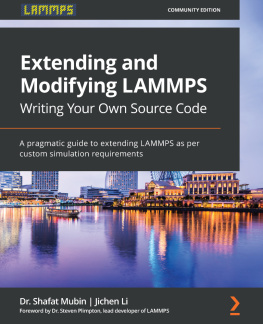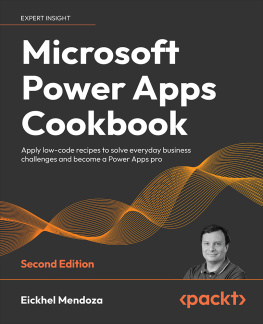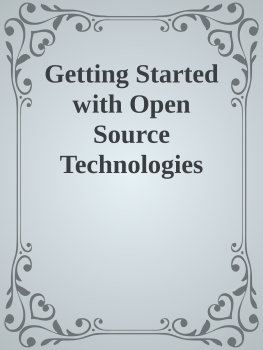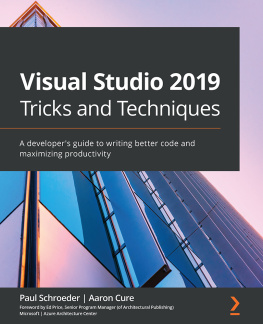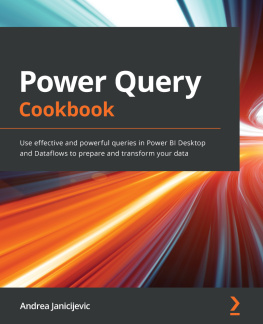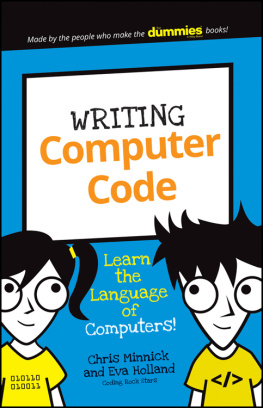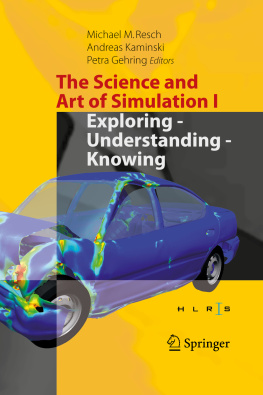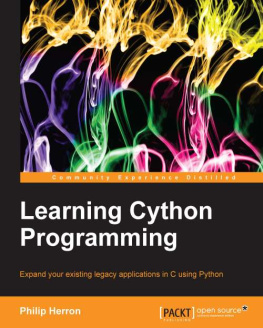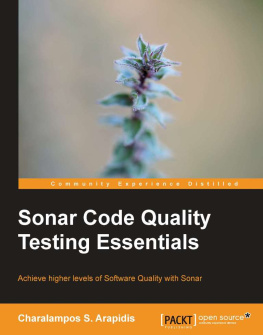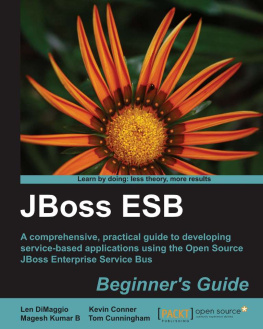Dr. Shafat Mubin - Extending and Modifying LAMMPS Writing Your Own Source Code: A pragmatic guide to extending LAMMPS as per custom simulation requirements
Here you can read online Dr. Shafat Mubin - Extending and Modifying LAMMPS Writing Your Own Source Code: A pragmatic guide to extending LAMMPS as per custom simulation requirements full text of the book (entire story) in english for free. Download pdf and epub, get meaning, cover and reviews about this ebook. year: 2021, publisher: Packt Publishing Ltd, genre: Computer. Description of the work, (preface) as well as reviews are available. Best literature library LitArk.com created for fans of good reading and offers a wide selection of genres:
Romance novel
Science fiction
Adventure
Detective
Science
History
Home and family
Prose
Art
Politics
Computer
Non-fiction
Religion
Business
Children
Humor
Choose a favorite category and find really read worthwhile books. Enjoy immersion in the world of imagination, feel the emotions of the characters or learn something new for yourself, make an fascinating discovery.
- Book:Extending and Modifying LAMMPS Writing Your Own Source Code: A pragmatic guide to extending LAMMPS as per custom simulation requirements
- Author:
- Publisher:Packt Publishing Ltd
- Genre:
- Year:2021
- Rating:3 / 5
- Favourites:Add to favourites
- Your mark:
Extending and Modifying LAMMPS Writing Your Own Source Code: A pragmatic guide to extending LAMMPS as per custom simulation requirements: summary, description and annotation
We offer to read an annotation, description, summary or preface (depends on what the author of the book "Extending and Modifying LAMMPS Writing Your Own Source Code: A pragmatic guide to extending LAMMPS as per custom simulation requirements" wrote himself). If you haven't found the necessary information about the book — write in the comments, we will try to find it.
Understand the LAMMPS source code and modify it to meet your research needs, and run simulations for bespoke applications involving forces, thermostats, pair potentials and more with ease
Key Features- Understand the structure of the LAMMPS source code
- Implement custom features in the LAMMPS source code to meet your research needs
- Run example simulations involving forces, thermostats, and pair potentials based on implemented features
LAMMPS is one of the most widely used tools for running simulations for research in molecular dynamics. While the tool itself is fairly easy to use, more often than not youll need to customize it to meet your specific simulation requirements. Extending and Modifying LAMMPS bridges this learning gap and helps you achieve this by writing custom code to add new features to LAMMPS source code. Written by ardent supporters of LAMMPS, this practical guide will enable you to extend the capabilities of LAMMPS with the help of step-by-step explanations of essential concepts, practical examples, and self-assessment questions.
This LAMMPS book provides a hands-on approach to implementing associated methodologies that will get you up and running and productive in no time. Youll begin with a short introduction to the internal mechanisms of LAMMPS, and gradually transition to an overview of the source code along with a tutorial on modifying it. As you advance, youll understand the structure, syntax, and organization of LAMMPS source code, and be able to write your own source code extensions to LAMMPS that implement features beyond the ones available in standard downloadable versions.
By the end of this book, youll have learned how to add your own extensions and modifications to the LAMMPS source code that can implement features that suit your simulation requirements.
What you will learn- Identify how LAMMPS input script commands are parsed within the source code
- Understand the architecture of the source code
- Relate source code elements to simulated quantities
- Learn how stored quantities are accessed within the source code
- Explore the mechanisms controlling pair styles, computes, and fixes
- Modify the source code to implement custom features in LAMMPS
This book is for students, faculty members, and researchers who are currently using LAMMPS or considering switching to LAMMPS, have a basic knowledge of how to use LAMMPS, and are looking to extend LAMMPS source code for research purposes. This book is not a tutorial on using LAMMPS or writing LAMMPS scripts, and it is assumed that the reader is comfortable with the basic LAMMPS syntax. The book is geared toward users with little to no experience in source code editing. Familiarity with C++ programming is helpful but not necessary.
Dr. Shafat Mubin: author's other books
Who wrote Extending and Modifying LAMMPS Writing Your Own Source Code: A pragmatic guide to extending LAMMPS as per custom simulation requirements? Find out the surname, the name of the author of the book and a list of all author's works by series.

